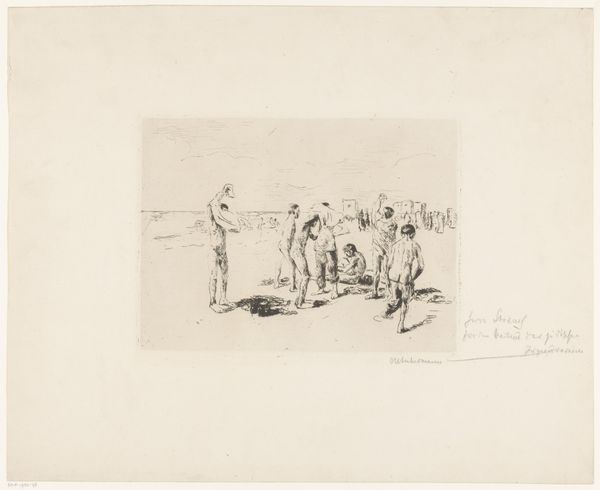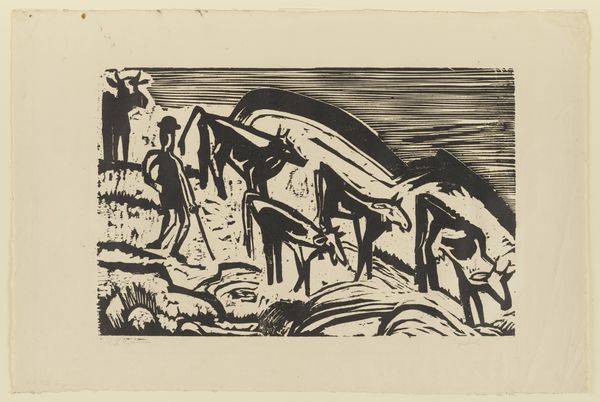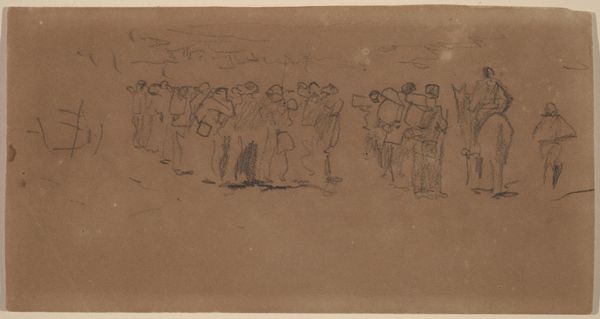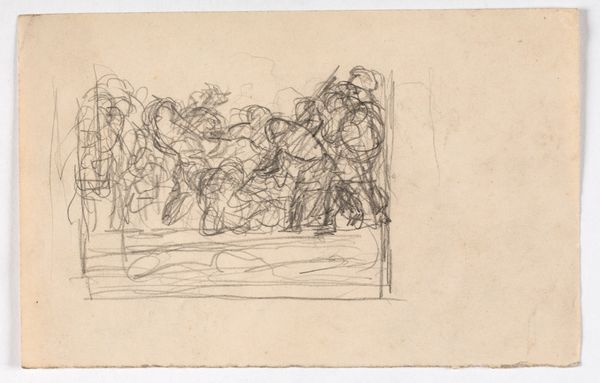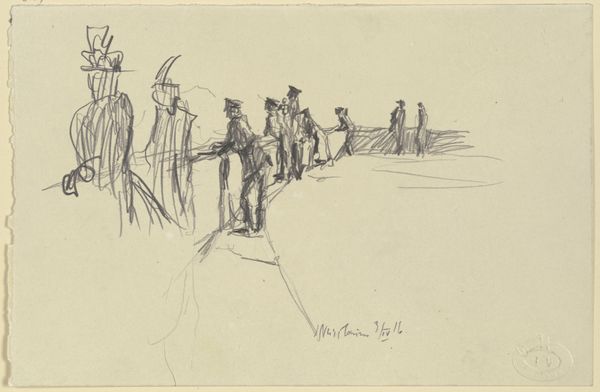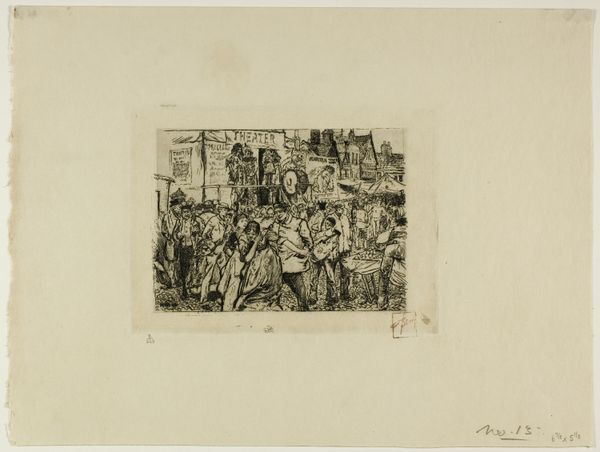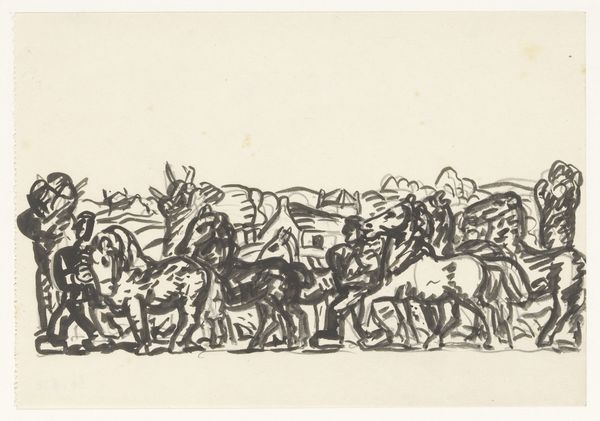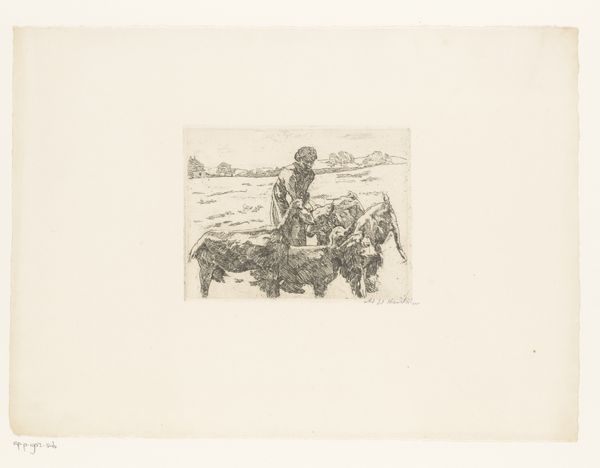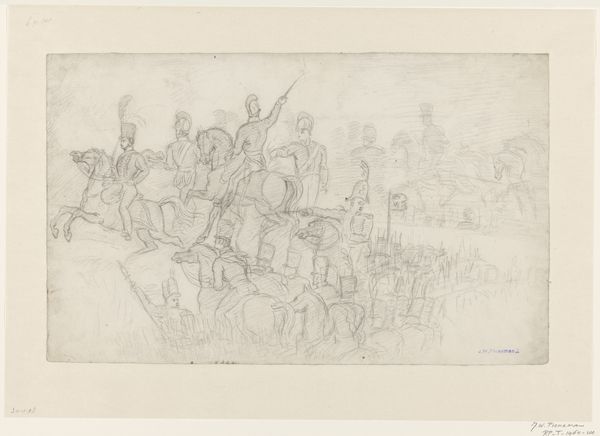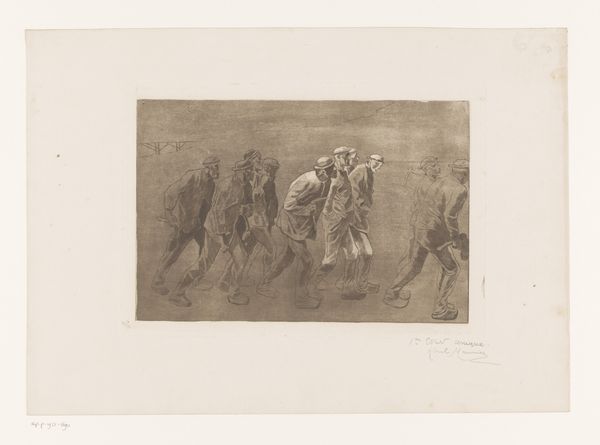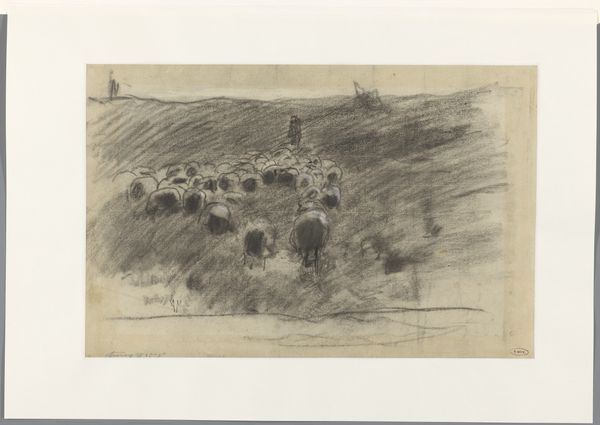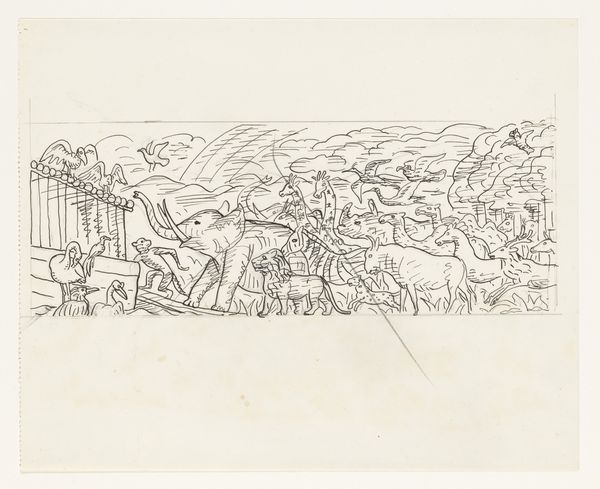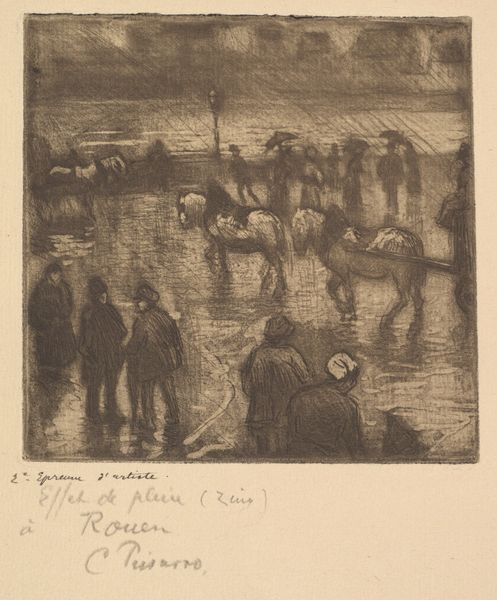
print, etching
# print
#
etching
#
landscape
#
genre-painting
#
realism
Dimensions: height 103 mm, width 146 mm, height 130 mm, width 176 mm
Copyright: Rijks Museum: Open Domain
Editor: Here we have George Hendrik Breitner's "Resting Cavalry," an etching from around 1891 to 1893. The texture is quite rough and immediate, but the overall mood strikes me as calm, almost subdued. What draws your attention when you look at this piece? Curator: It's interesting that you perceive calmness. I see it as Breitner engaging with a rapidly changing urban landscape, even when depicting something seemingly traditional like cavalry. The late 19th century saw significant militarization across Europe. So, how does this quiet scene speak to the growing presence and changing role of the military in society? Editor: So, it's not necessarily a peaceful scene of soldiers at rest, but maybe more about how military presence was becoming a normalized part of everyday life? Curator: Exactly. Breitner was known for documenting the everyday realities of Amsterdam. Etchings like this, widely reproduced and circulated, would have subtly reinforced a sense of national strength and order, while still hinting at the disruption that a standing army might also represent in a civilian space. Look at how casually the soldiers and horses are arranged. What does that suggest? Editor: Perhaps it suggests the casualness that comes from such normalization? They aren't posed heroically, but they do seem like they belong to this place and time, an ordinary genre-scene with hints of political context. The use of printmaking suggests they could be more easily dispersed for the public eye, also solidifying that normal military image you are talking about? Curator: Precisely. By circulating these images, Breitner both reflected and shaped public perception of the military's role in a rapidly modernizing Netherlands. Think about how this image functions as propaganda, subtly shaping public sentiment. Editor: I hadn't considered the potential for such subtle political messaging within a genre scene! I'll definitely look at art from this period differently now. Curator: It is always about asking questions, not accepting things as face value. Even if it seems straightforward, everything holds its subtle political messages that tells a deeper story.
Comments
No comments
Be the first to comment and join the conversation on the ultimate creative platform.
